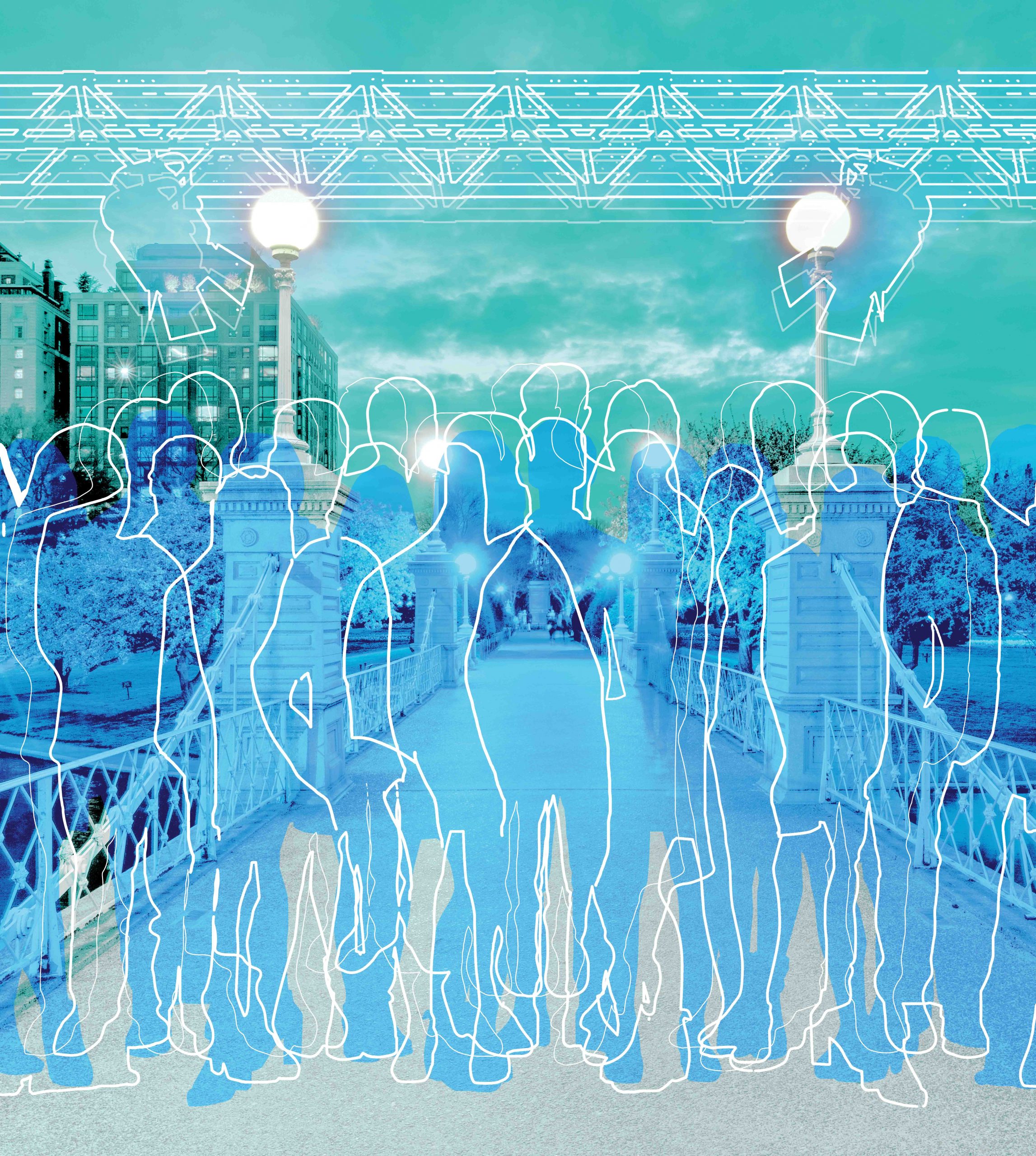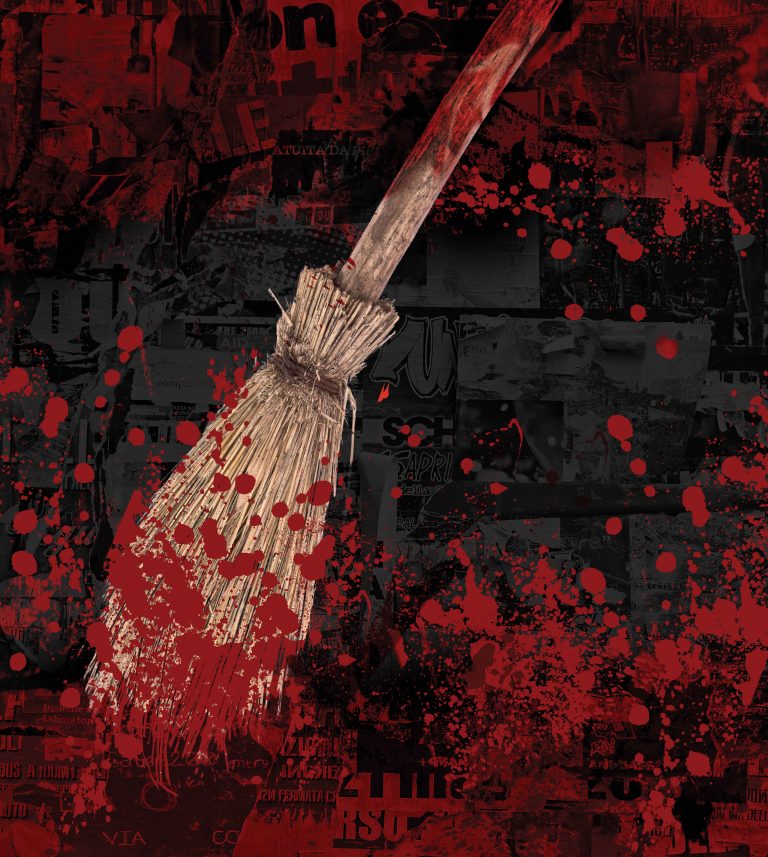Interview with the Playwright and Director | 16 WINTERS
by Maddie Thorpe, Dramaturg
I met with guest artists Mary Hamilton and Aneesha Kudtarkar to discuss 16 Winters, their collaboration, and working with the Emerson community. Here is a transcript of that conversation:
Maddie Thorpe: Mary, where did the idea for this play come from? Which came first, The Winter’s Tale as source material or this contemporary play with these themes?
Mary Hamilton: I wrote the play in response to the American Shakespeare Center’s annual competition called “Shakespeare’s New Contemporaries.” Each year, they have a handful of Shakespeare’s plays that they give as options to write a play in conversation with. One of those plays was The WInter’s Tale, which is a play I’ve always loved. After rereading it, the idea came pretty quickly of “what was happening in those 16 years?” It’s such a bizarre gap of time, and those tend to be sources of inspiration for me– questions of what is happening in a moment that we haven’t thought about in the middle of some more tumultuous set of circumstances. So, that was the spark of the play, and then it sort of developed into this whole other thing that we have, which is quite different from The Winter’s Tale. It’s certainly a springboard, and many of the ideas of that play were in my mind when I was writing this, but I was pretty sure I wanted this to be its own thing and to stand as its own story with its own characters. But it felt like a fun world to live in and people to draw inspiration from.
MT: How long have you been working on this play?
MH: Well, I started it in 2017, which is when that competition was, and they put it on in 2018 at the American Shakespeare Center in Virginia, so I was developing it over the course of that year. I did a developmental workshop in New York and worked with the actors there. And then, as we all know, the events of the next few years put everything on hold a bit, so I really hadn’t looked at the play since then until submitting it here at Emerson. So, this has been a fun reawakening of something I had put aside.
MT: Going back to this idea of what we hadn’t seen in The Winter’s Tale, we don’t get to see “The Bear’s Tale” in the original. So, what is the significance of the Bear? Why did you pull that moment into such an integral part of this play?
MH: Some things just come very clearly in the early stages of writing, and the Bear as the narrator has been there from the get-go. It’s one of those very striking images from Shakespeare’s play, this Bear in the middle of it that’s so unexplored and is the only extant stage direction in Shakespeare that doesn’t really get unpacked a lot in his play. It seemed compelling to me for that reason, certainly, but also it sort of came out of thin air, as ideas sometimes do.
MT: Mary and Aneesha, you two have worked together before. Where did you meet, and how did you know you wanted to work together on this project?
MH: I met Aneesha through a mutual friend of ours who had recommended her when I was looking for a director of a Zoom reading of a new play. Every once in a while you meet a director who directs something of yours and just seems to intuitively get it, and get the language and the rhythms and what you’re going for, and then be able to take that and lift it and bring their own thing to it very organically. It was a two-day Zoom reading, and those are often awkward and hard to gauge any relationship, but I had a good feeling about her. It just seemed to click in all the ways you want a collaboration to click. After that, we ended up working together on a different play of mine in Cape Cod last summer where we got to know each other a little better, and that’s probably around the time we applied for the New Play Workshop, and here we are!
Aneesha Kudtarkar: In terms of this play, The Winter’s Tale is up there in terms of my favorite Shakespeare plays. It’s very moving and very complicated and does all of these cool, complex things structure-wise and storytelling-wise that you don’t see earlier in Shakespeare’s career. It’s also very weird, and when you look at the plot points of it, it’s kooky and hard to follow, and it sort of seems like, in certain moments, you’re like “oh, what play is this now?” And there’s something about that that I find charming. But one of the hard things about it is that you lose track of the female characters for so long. On one hand, it is a play about how long it takes to change. On the other hand, Shakespeare, with that time jump, does sort of a, “let’s skip to the good part!” And I love Mary’s writing in general because she puts words to feelings that a lot of people have but aren’t always ready to talk about. Like, this ambiguity around romantic love, I think she approaches with a lot of thought and care and a good sense of humor. I think we have a similar sense of humor that’s sort of dark. I also love this play because I think there’s something very charming about bringing these characters into a more contemporary milieu and giving them space to gripe with the original plot a little bit, and struggle and fight and maybe come out with a different ending.
MT: With the Emerson New Play Workshop, how did you hear about it? And what made you think Emerson might be a good fit to work on this play?
MH: I heard about it through New Dramatists, which periodically sends out newsletters of opportunities to apply to. I knew I had this play kicking around which is, in many ways, good for a college setting because there are a lot of young people, and it talks about ideas that are fun to talk about with college-aged students. I’ve always thought it was something that would live in a college setting pretty well, so this seemed like a great chance to revive this play that I hadn’t worked on in a while and to dive back into it. And y’all have been wonderful, so I think that has proven true!
AK: Because it’s a Shakespeare-adjacent play, I think doing it in a space where you’re engaging with canonical texts and working on adaptations or companion pieces to canonical texts, this seemed like a good place for that. And because of the size of the ensemble, I think it’s a great opportunity for a student company to dig in, because there is this sense of needing this nice ensemble to round each other out. So, I think working in a college like Emerson has been a really great place to do that.
MT: What has your experience been so far working on this play with the Emerson community of designers, SMs, and of course, actors?
AK: It’s been so nice! Everyone is so excited and enthusiastic, and they’ve brought great ideas. Mary and I have been so impressed by these really good insights people are having in the rehearsal rooms and in meetings with the designers. It’s been really nice to feel like the play is being received by the Emerson community and that all of you have been ready to run with it and bring it to life.
MH: I have been universally impressed with Emerson students. The level of professionalism among your students is really striking, and it’s been a fun and exciting place to dive back into the play. Across the board, the level of talent and professionalism with the designers and actors and everyone has led to some really great and exciting work. It’s been really great to dive back into this world with you all.
MT: Likewise, it’s always really exciting to meet and work with artists who are actually out there working in the industry! What are some of the things that you have learned and discovered about this play and these characters in this workshop?
MH: Well, I came into it with some questions, but it was largely a play that felt, to some degree, finished. Not that there weren’t things to explore, but I thought that the exploration was going to be more about internal character work and diving deeper in the way that you can when something has its shape already. But that turned out not to be the case. In fact, instead, I’ve gone in and completely torn apart the structure of the second act and added a huge plot point in the first act in ways that I think are exciting and complicated and, arguably, impossible to finish in the length of time that we have, but such is new play development. And I think that’s been an exciting discovery, and not one that I expected coming to it. I thought “okay, I’m going back to this play that I wrote years ago, and I’ll have new ideas because time has passed.” But actually, it’s opened up in a way that’s exciting and scary and all the things that you want from a collaboration.
AK: The Bohemians in the first iteration of the script had a completely different thing that they were doing. We sat at the table and worked on it for a couple of days puzzling it out, and then at a certain point, Mary turned to the cast and asked “what do you all talk about when you’re hanging out with friends?” And that conversationyielded a totally different tone and tenor and is ultimately what’s going to be in the script. And so, going back to your question of why this felt like a good piece to bring to Emerson, 50% of the play focuses on this enclave of Bohemians, these young people that are trying to reimagine the world. So, Mary and I were like “what do young people who are trying to reimagine the world do, and talk about, and sound like?” And that’s something you can’t really fake, so getting to hear that straight from the company has been quite thrilling.
MT: Last question: what do you want the Emerson community to know going into 16 Winters?
AK: You don’t need to know The Winter’s Tale to have a great time at 16 Winters. This is a standalone piece of theatre with its own characters, inspired by The Winter’s Tale, so you don’t need to know Shakespeare to have a great time!


